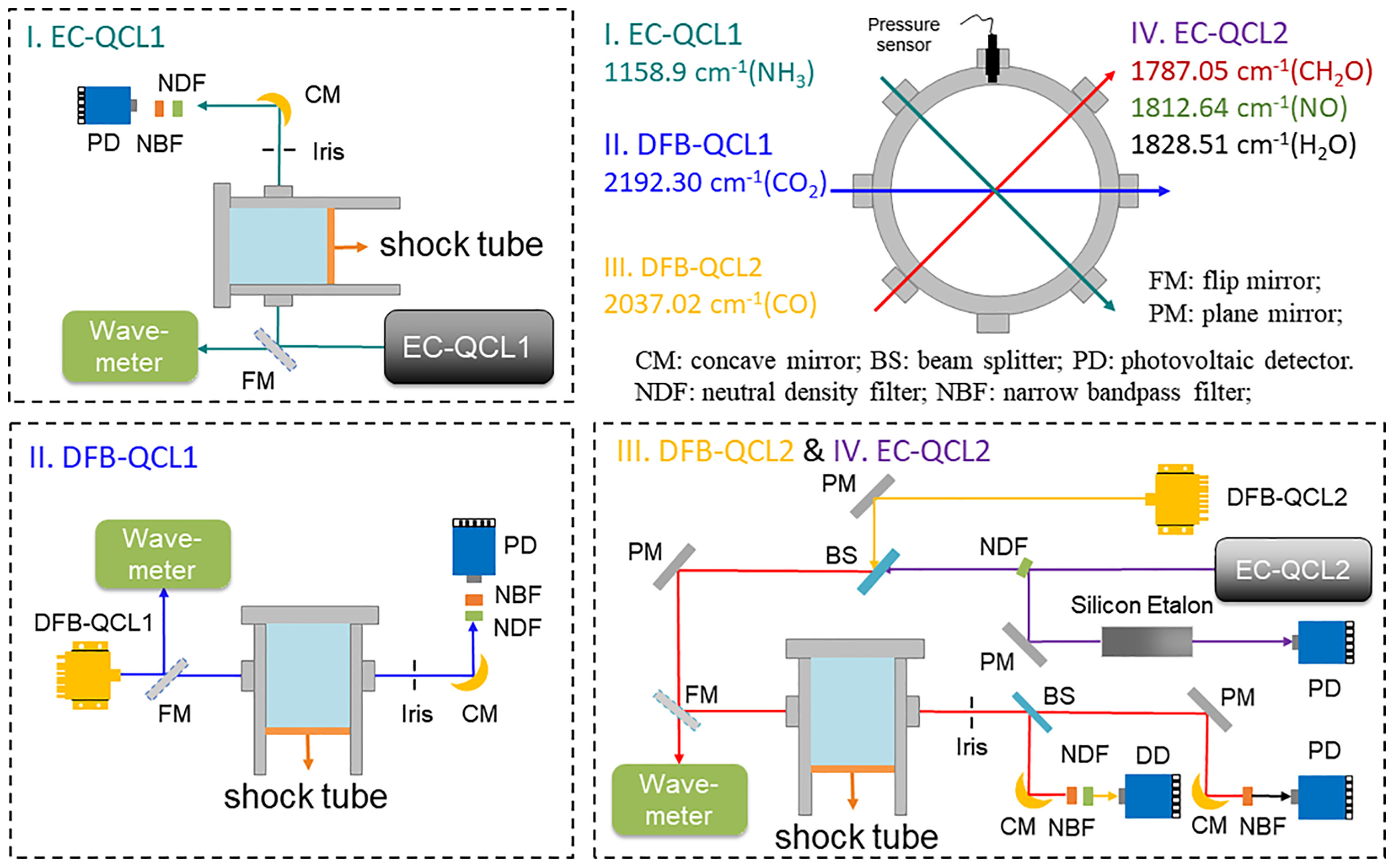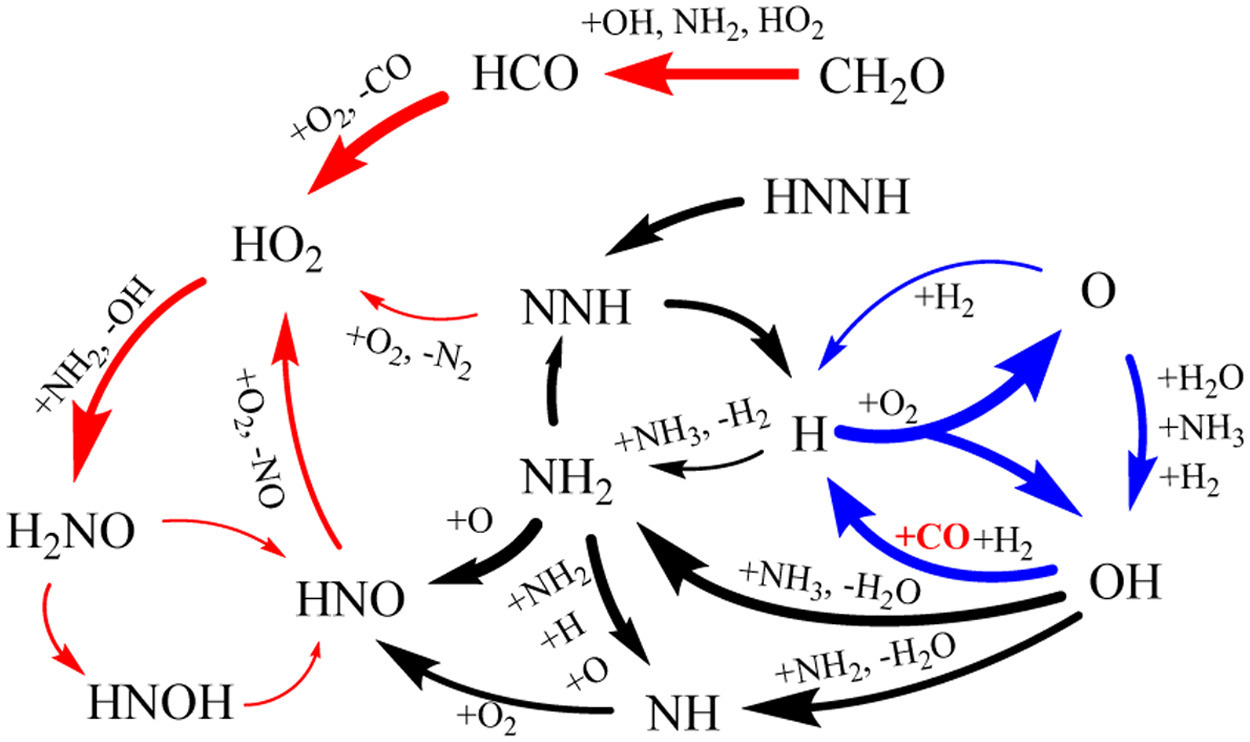

.png?sfvrsn=1b6bae1a_0) (FASTER)
(FASTER).png?sfvrsn=ac211bda_0)
Ammonia, being carbon-free and a hydrogen carrier, is an attractive fuel for reducing greenhouse gas emissions. However, its low reactivity and narrow flammability limit require enhancements for practical applications in engines and turbines. Blending ammonia with reactive fuels helps improve its combustion efficiency, making it a potential solution for cleaner power generation.

Schematic diagram of the laser diagnostics system. PM: plane mirror; BS: beam splitter; CM: concave mirror; FM: flip mirror; NDF: neutral density filter; NBF: narrow bandpass filter; PD: photovoltaic detector.
The research explores ammonia’s low reactivity and aims to improve its combustion characteristics by blending it with more reactive fuels. Key experiments measure ignition delay times (IDTs) and laminar flame speeds across a wide range of temperatures, pressures, and fuel compositions using advanced modeling and experimental setups like shock tubes and rapid compression machines. The project aims to develop robust kinetic models to predict ammonia’s behavior when blended with these fuels.

The radical transfer mechanism within NH3 and CH2O interaction. Red, black and blue arrows denote the major pathways during the first, second and third reaction stage, respectively. The arrow thickness indicates the contributions of the corresponding pathway.